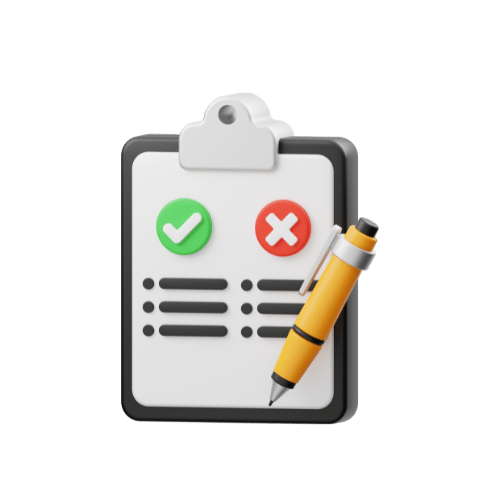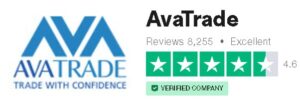Quick Answer: How Can you Short the Euro?
To short the Euro, trade EUR/USD currency pairs on Forex, favoring USD. Invest in inverse Euro ETFs, or use futures for leverage. Monitor EU economic indicators and events for timely trades. Always hedge to manage potential risks involved in shorting a currency.

Investing in the forex market offers a plethora of opportunities, one of which is the ability to profit from a currency’s decline by shorting it. In this guide, we will explore how to short the Euro, covering everything from the basic concepts to leveraging your positions for maximum gain.
Step-by-Step Guide to Shorting the Euro
Open a Forex Trading Account: Select a trustworthy Forex broker that offers currency pairs involving the Euro (e.g., EUR/USD, EUR/GBP). Complete the necessary registration steps to create your account.
Deposit Funds: Add adequate funds to your trading account to meet margin requirements and cover potential losses. Keep in mind that shorting the Euro involves inherent risks.
Locate Relevant Currency Pair: Go to the trading section of your broker’s platform and find a currency pair where the Euro is the base currency (e.g., EUR/USD).
Execute the Trade: Utilize your broker’s trading interface or mobile app to sell the selected currency pair, thereby shorting the Euro. Verify all trade details and settings before confirming the transaction.
Best Place to Short the Euro
AvaTrade is a leading online CFD provider in the UK that provides access to a wide range of financial instruments, including stocks, currencies, commodities, and indices.
Available to use in the UK: Yes
Investor Protection: None to UK
Minimum Deposit: $100 (in order to use the account)
Time to open account: 1 day or less
World-class educational tools and resources
Multiple platforms: Desktop, web and mobile
1,000 + types of financial instrument
Multi award winning provider
Negative balance protection
76% of retail investor accounts lose money when trading CFDs with this provider. You should consider whether you can afford to take the high risk of losing your money.
What I liked
AvaTrade’s fee structure was quite fair, with an EURUSD spread of only 0.9, which is competitive within the industry. The absence of withdrawal and deposit fees was a significant plus, making it financially sensible for traders who frequently move funds. A minimum deposit requirement of $100 is also reasonable, allowing entry-level traders to access the markets.
The deposit methods available, including Bank Transfer, PayPal, Wise, and Revolut, afforded me great flexibility, which I highly value. The ease and efficiency of transactions on AvaTrade cannot be overstated.
A standout feature of AvaTrade is the availability of both MT4 and MT5 platforms. For someone who relies heavily on technical analysis and automated trading, these platforms offer the tools and flexibility needed to trade effectively. The full marks for account opening are well-deserved; it was a streamlined and hassle-free process.
The platform score of 4.8/5 is reflective of the overall user experience, which was intuitive and reliable. Furthermore, customer service was commendable with a score of 4.2/5, indicating a responsive and helpful team.
What I Didn't Like
Despite these strong points, there are areas where AvaTrade could improve. The lack of FCA regulation and FSCS protection for UK clients is a noticeable drawback. While the Central Bank of Ireland (CBI) is a reputable regulator, the FSCS’s guarantee of £85K protection offers an additional layer of security that provides UK traders with peace of mind, something that’s missing here.
Moreover, while the fees score is close to 4, greater transparency around how this score is derived would be beneficial for traders aiming to fully understand the cost implications of their trading strategies.
In sum, AvaTrade offers a robust trading platform with a strong emphasis on user experience and an array of tools suitable for both novice and advanced traders. The cost structure is trader-friendly, and the platform’s technical capabilities are excellent. However, the regulatory aspect might require potential UK clients to weigh the absence of FSCS protection in their decision-making. Despite this, the overall trading experience with AvaTrade has been positive and conducive to an efficient trading practice.
Pros
- Reasonable Fees::With a fee score of 3.8/5 and an EURUSD spread of 0.9, AvaTrade offers fairly competitive pricing.
- No Withdrawal or Deposit Fees: The lack of fees for deposits and withdrawals makes it easier for traders to manage their funds without incurring additional costs.
- Flexible Deposit Options: The availability of multiple deposit methods, including bank transfer, PayPal, Wise, and Revolut, provides convenience and flexibility.
- Robust Platform: The platform received a high score of 4.8/5, suggesting a strong user experience with reliable and efficient trading tools.
- Customer Service: A solid customer service score of 4.2/5 implies that support is accessible and helpful when needed.
Cons
- Lack of FCA Regulation: :For UK traders, the fact that AvaTrade is not regulated by the Financial Conduct Authority (FCA) may be a concern, despite its regulation by the Central Bank of Ireland.
- No FSCS Protection: The absence of Financial Services Compensation Scheme (FSCS) protection means UK clients do not have the same level of financial security as some other brokers provide.
- Platform Improvements Possible: While the platform is highly rated, any score less than perfect indicates room for improvement, which could include features, usability, or customisation options.
AvaTrade stands out with its extensive collection of over 1250 assets, covering a wide array of trading instruments.
Forex Trading – AvaTrade offers an extensive range of currency pairs for trading, presenting opportunities to engage in the dynamic forex market and various CFD options.
Stocks and Commodities Trading – This platform provides a vast selection of stocks and commodities, enabling investments in company shares and raw materials in international markets.
Cryptocurrency Trading – AvaTrade allows trading in an array of cryptocurrencies, offering access to numerous digital currencies, including well-known ones like Bitcoin, Ethereum, and others.
Diverse Investment Instruments – With AvaTrade, traders can explore ETFs, bonds, treasuries, and indices, broadening their investment portfolio and gaining exposure to different sectors and markets.
| Type | Fee |
| Minimum Deposit | £100 |
| Inactivity Fee | USD Account: $50 EUR Account: €50 GBP Account: £50 |
| Administration Fee | USD Account: $100 EUR Account: €100 GBP Account: £100 |
| Deposit Fee | $0 |
| Withdrawal Fee | $0 |
Understanding the Basics: What Does It Mean to Short the Euro?

Shorting a currency like the Euro essentially means that you are betting on its decline against another currency, often the U.S. dollar. To do this, you would sell the Euro at a higher rate with the expectation to buy it back at a lower rate in the future. This way, the difference between your selling and buying price becomes your profit.
The Concept of Short Selling Explained
In most standard investments, the idea is to buy low and sell high. Short selling, however, flips this concept on its head; you sell high and aim to buy back low. Here’s how it works:
Borrow: First, you borrow Euros through your trading platform.
Sell: You then immediately sell these borrowed Euros at the current market price.
Wait: As the Euro declines in value against the currency pair (often the U.S. Dollar), you wait for the opportune moment.
Buy Back: When the value of the Euro has decreased sufficiently, you buy back the Euros.
Return and Profit: You then return the borrowed Euros and keep the difference as profit.
The entire process might sound simple, but it’s fraught with risk and complexity, demanding a solid understanding of market conditions and a strong risk management strategy.
The Role of Leverage in Shorting
Leverage amplifies the gains and losses in trading. In shorting the Euro, leveraging allows you to control a large position with a relatively small amount of capital. For example, with 50:1 leverage, a $1,000 investment can control a $50,000 position in the market.
Here are some points to consider about leveraging when shorting the Euro:
Increased Profits: The higher the leverage, the more significant the potential gains.
Higher Risk: Leverage also amplifies losses, making it crucial to use stop-loss orders and other risk management tools.
Margin Calls: If the market moves against you, you may need to deposit additional funds to maintain the position, known as a margin call.
Leverage can be a powerful tool when used judiciously, but it’s essential to be aware of the heightened risks involved. Always make sure you understand the terms and conditions of leveraging on the platform you choose to trade.
Step-by-Step Guide: The Mechanics of Shorting the Euro

Shorting the Euro isn’t as simple as selling high and buying low; several steps and considerations must be taken into account to execute this strategy successfully. This section aims to guide you through the mechanics, helping you make more informed decisions.
Choosing the Right Trading Platform
Selecting an appropriate trading platform is crucial to successfully short the Euro. Here are some factors you should consider:
Regulation: Make sure the platform is regulated by a trustworthy financial authority like the FCA.
Fees: Be aware of transaction fees, overnight fees, and any hidden charges.
Trading Tools: Ensure that the platform offers the technical indicators, charts, and other trading tools you need.
Leverage: Check the leverage options available and make sure they align with your risk tolerance.
User Interface: A clean, intuitive interface can make your trading experience significantly more comfortable and efficient.
Placing Your Short Order
Once you have chosen a platform, the next step is placing your short order. Here’s how:
Research and Analysis: Before executing any trade, conduct market analysis to decide if shorting the Euro is a good idea at that time.
Setting Up the Trade: Open the trading platform and navigate to the currency pair involving the Euro (e.g., EUR/USD).
Choosing Order Type: Select ‘Sell’ to place a short order.
Determining Position Size: Decide the number of units you want to sell. This is where you consider leverage.
Risk Management: Set up stop-loss and take-profit levels to manage your risks effectively.
Confirmation: Review all the trade parameters and confirm the short order.
Your position will now be open, and you will ‘own’ a short trade on the Euro. Keep monitoring the markets and your trade until you decide it’s time to close the position.
Risk Factors: What to Know Before You Short the Euro
While the possibility of high returns is appealing, shorting the Euro has its risks that you must understand and manage.
Market Volatility and Timing
The forex market is inherently volatile, and currencies can fluctuate for a variety of reasons such as economic indicators, geopolitical events, or market sentiment. Wrong timing can lead to significant losses. It’s essential to:
Watch Economic Calendars: Stay updated on events that might affect the Euro.
Monitor News: Geopolitical news can cause sudden spikes or drops in currency value.
Use Technical Indicators: These can help predict market direction to some extent.
Understanding Margin Calls
When you’re trading on margin, you’re essentially borrowing money from the trading platform to control a larger position. If the market moves against you, the platform may issue a margin call, requiring you to deposit additional funds to maintain the position.
Immediate Action Required: Margin calls usually require immediate action, and failure to meet them can result in the closing of your positions at a loss.
Risk Management: Using stop-loss orders and not over-leveraging can help you avoid or mitigate the impacts of margin calls.
Knowing these risk factors and how to manage them can go a long way in helping you become successful in your endeavours to short the Euro.
Top Strategies for Shorting the Euro Effectively
Successfully shorting the Euro—or any currency, for that matter—requires more than just an understanding of the basics. You also need a set of proven strategies to guide your trading decisions. Below, we explore some of these strategies, focusing on technical analysis and hedging your positions.
Using Technical Analysis
Technical analysis involves studying past market data, primarily price and volume, to forecast future market trends. Here are some technical indicators and tools commonly used when shorting the Euro:
Moving Averages: Helps smooth out price data to create a single flowing line, making it easier to identify the direction of the trend.
Relative Strength Index (RSI): Measures the magnitude of recent price changes to evaluate overbought or oversold conditions.
Bollinger Bands: These bands adapt to volatility in the price of a stock. A band squeeze denotes a period of low volatility and is considered by traders to be a potential indicator of future increased volatility and possible trading opportunities.
Candlestick Patterns: These can offer insights into market sentiment and can be used for both short-term and long-term analyses.
Hedging Your Positions
Hedging involves taking an offsetting position to protect against adverse moves in your primary trade. When shorting the Euro, you can hedge by:
Using Options: Purchase an option to buy the Euro at a future date. If the Euro rises instead of falling, the option will offset the losses in your short position.
Trading Correlated Assets: Go long on assets that have a negative correlation with the Euro. This way, if the Euro does not decline as expected, your losses may be offset by gains in the correlated asset.
Using Stop-loss Orders: This doesn’t hedge against loss but limits the loss by automatically closing your position if the Euro reaches a certain value.
Legal and Ethical Considerations: Is It Legal to Short the Euro?

Shorting the Euro is generally legal, but there are important legal and ethical considerations to keep in mind.
Regulatory Compliance
Every jurisdiction has its own set of rules and regulations regarding forex trading. It’s crucial to:
Know the Regulations: Before you start, make sure you understand the regulations that apply to forex trading in your jurisdiction.
Tax Liabilities: Profits from forex trading are generally subject to tax. Make sure to report your earnings accurately.
Documentation: Keep all trading records for compliance with financial regulations and for tax purposes.
Common Mistakes to Avoid
Over-leveraging: Using too much leverage can amplify losses quickly. It’s important to understand the risks associated with leverage and to use it cautiously.
Lack of Research: Failing to do adequate research or relying solely on tips and rumours can result in significant losses.
Ignoring Risk Management: Not using stop-loss orders or not having a risk management strategy can be devastating, especially when the market moves against you.
Emotional Trading: Decisions driven by emotions like greed or fear usually lead to poor outcomes. Stick to your trading plan and strategy.
Failure to Monitor News and Events: Ignoring economic indicators and geopolitical events can affect currency values. Keep an eye on the news to stay ahead of market changes.
Not Keeping Records: Good record-keeping helps you learn from your successes and mistakes. Keeping a trading journal can be very beneficial for improvement.
Summary
Trading Forex: A Strategic Approach Engaging in trading forex requires a solid forex trading strategy. The forex markets are vast, with forex traders actively engaging in the currency markets daily. The European Central Bank plays a significant role in influencing the foreign exchange market, particularly the euro currency which competes with other currencies.
Navigating Forex Pairs The art of trading forex pairs involves understanding the dynamics between one currency and its counter currency. This includes how they react to global events and changes in interest rates. A single forex trade on the right forex pair can be lucrative, but only if done with proper knowledge and timing.
Volume and Brokerage The average daily trading volume in forex illustrates the liquidity and volatility of trading currencies. Engaging with a reputable broker is crucial for access to timely and accurate market data.
Investment Vehicles and Analysis For those looking to short the euro, investment vehicles like the CurrencyShares Euro Trust offer direct exposure. Successful traders always perform fundamental analysis to understand currency valuations and make informed decisions.
Conclusion
Shorting the euro requires an intersection of forex trading strategy, market insight, and an understanding of the economic indicators released by the European Central Bank. By focusing on forex pairs involving the euro, traders can speculate on movements against the euro in the foreign exchange market. However, the key to success lies in thorough fundamental analysis and partnering with a reputable broker to navigate the forex markets effectively. Remember, the goal is not just to trade but to trade wisely, using the high liquidity of the euro and its place in the currency markets to your advantage.
Frequently Asked Questions About How to Short the Euro
Our #1 recommended Forex Trading Platform in the UK
76% of retail CFD accounts lose money.
The potential earnings from shorting the Euro can vary widely depending on various factors such as market conditions, your trading strategy, and the amount of leverage used. While the possibility of high returns exists, it’s crucial to remember that losses can be significant as well.
Market volatility, timing, the size of your position, and leverage are all factors that can impact your potential returns. Better timing and a well-researched strategy can increase your chances for a profitable trade.
While some traders do make a consistent income from forex trading, it is a high-risk endeavour that requires a deep understanding of the market, a solid trading strategy, and excellent risk management skills. There is no guarantee of consistent income.




 Seasoned finance professional with 10+ years' experience. Chartered status holder. Proficient in CFDs, ISAs, and crypto investing. Passionate about helping others achieve financial goals.
Seasoned finance professional with 10+ years' experience. Chartered status holder. Proficient in CFDs, ISAs, and crypto investing. Passionate about helping others achieve financial goals.